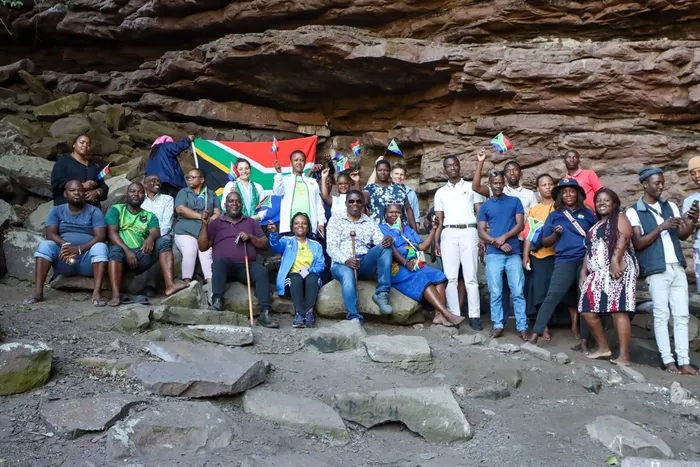Sibhudu Caves declared a World Heritage Site

Members of the KZN Department of Arts and Culture at the Sibudu CavesPic: Supplied
The Sibhudu Caves in Driefontein near KwaDukuza has been officially recognised as a World Heritage Site by UNESCO.
Tourism KwaZulu made the official announcement after the 46th UNESCO World Heritage Committee sitting last week.
This site offers a unique glimpse into the country’s ancient past, with archaeological treasures that tell the story of early human habitation.
In 2022 the Sibudu Cave and Border Cave were declared as National Heritage sites.
The declaration was made in terms of the National Heritage Resources Act, 1999 (Act 25 of 1999).
These were among the sites for consideration in the Emergence of Modern Humans: Pleistocene Occupation category, and inscription as World Heritage sites. Six South African sites were approved by the Cabinet.
Sibudu is a rock shelter situated near Tongaat, north of Durban and contains an Iron Age deposit dating between 1 000 and 500 years old.
Discovered in 1967, it is reported that Sibudu was first excavated in 1983 by an archaeologist, Aron Mazel from the Natal Museum.
According to the report, the Iron Age deposits were probably laid down by ritual specialists such as doctors (herbalists) or rainmakers.
Border Cave is a rock shelter near the Lebombo Mountains in the far north of KZN, between the border of South Africa and Eswatini.
Among the fossils found in the cave, said the reports, is the almost complete skeleton of a child, dating back almost 82 000 years, but also the remains of five adult hominins older than 66 000 years.
Related Topics: